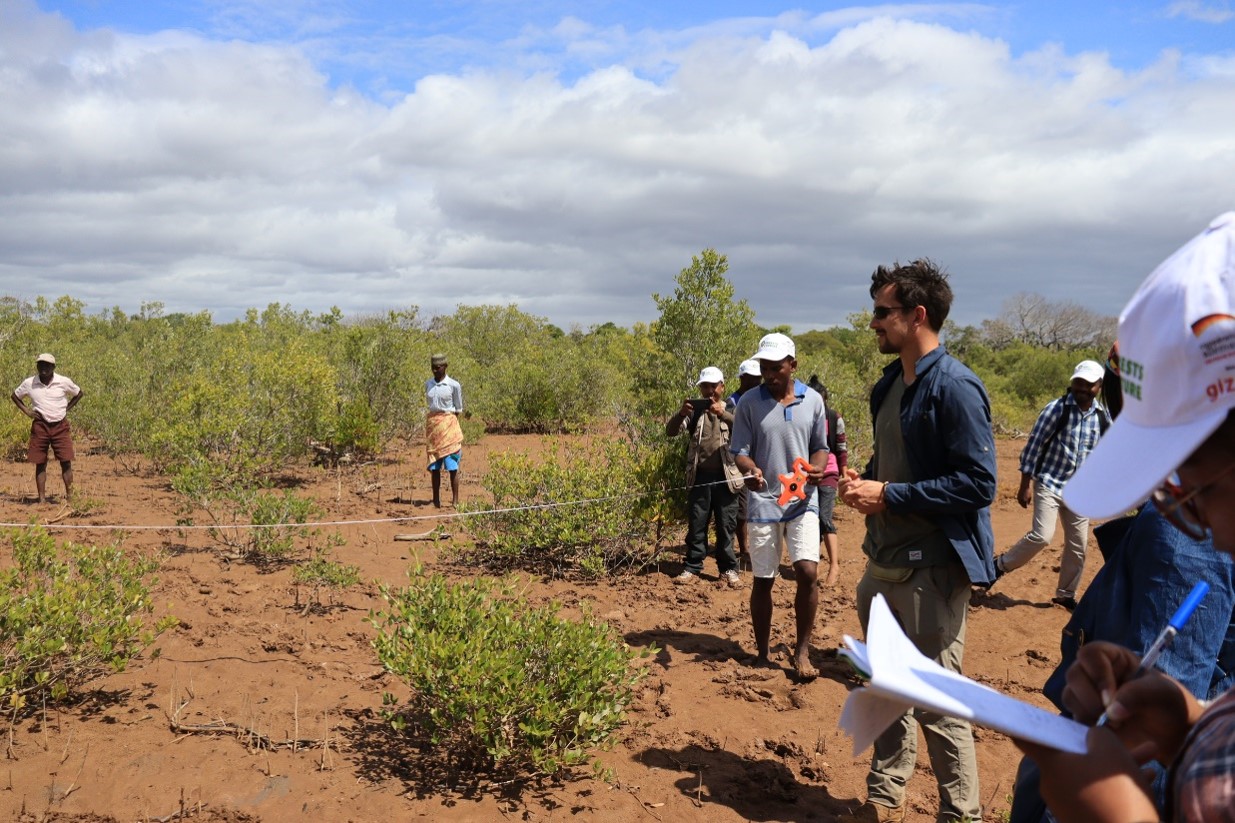

Satellite and drone images, despite their undeniable contribution for monitoring, they are limited in the initial years of FLR efforts. Data collection at field level is crucial in the first projects years.
Data collection at field level is further divided into three participative approaches:
- Permanent sampling plots: Fixed plots, where tree height, DBH, and tree survival rates will be estimated. Permanent sampling plots will be assessed in 3-year interval, due to their high labor and time input.
- Land use planning: discussion rounds for the assessment of information, as well as identification of endangered species according to the Red List of Threatened Species by the World Conservation Union (IUCN). It is integrated into other land use planning processes, and thus, has not a defined assessment interval.
- Transects: Identification of floristic and faunistic species, as well as forest structure composition, in an assessment interval of three months
All relevant indicators included in the three participative approaches are collected using the KOBO Toolbox. This software offers suitable conditions and is easy to operate, aligning with the monitoring objectives of the project.
A participative approach is essential in guaranteeing a long-term monitoring of the restored areas. The symbiosis of local knowledge and training/capacity building of local staff and regional partners is the core of this approach. Identifying the needs of the community, organizing discussion rounds, involving the local community in the developing and testing of the monitoring system, encourages consciousness and connection to the restored landscape.
-
Field Data Priority: In early FLR stages, field-level data collection is more effective than relying solely on satellite and drone images.
-
Participative Approaches: Employing participative methods like permanent sampling plots, land use planning, and transects involves local communities and enhances monitoring.
-
Appropriate Technology: Using user-friendly tools like KOBO Toolbox aligns well with project objectives and simplifies data collection.
-
Local Community Engagement: Engaging and training local communities ensures long-term success and fosters a connection to the restored landscapes.